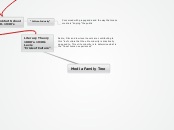Media Family Tree
Literacy Theory
1880's-1930's
Levis
"Crisis of Culture"
Radio, Film and low level novels are contributing to this "low" culture that the elite minority is drastically opposed to. This elite minority is to determine what is the "finest human experiences"
Frankfurt School
1920-1930's
"Culture Industry"
Concerned with propoganda and the way that mass media is "duping" the public
Cultural Studies 1960's (UK)
Focuses on the role media plays in our everyday lives
Comments on ideas of power and ideology
Berger-
Camera as the Mechanical Eye changing how we see
Mass Communications 60's
Looking at films, TV, Newspapers, radio
Focus on the idea of communication to the Masses
Interested in the effects on media on the population
"observed measured behavior"
Stimulus and response
Protectionist stances towards consumers of media
Protect Kids from media
Media Education 70's
"Add on" skills
Seen as Vocational training and skill focused
Media Literacy
Hobbs
Credible, Value
Information Literacy
Media Studies
Focus on new media; text, internet
Mass Media
The very idea of Mass Media is changing as there is a shift from top down media consumed by all, to new media that is focused and networked to other media sources focused on the same limited audience
Focuse on Networks and catering media to the target audience
Although the original idea may be the same, depending on the form the media takes, the audience may construct a different meaning. A Harry Potter book and Movie may tell the same story, but not mean the same thing to their respective audiences.
Network of media focused to an audience: Example Harry Potter (books, websites, video games, movies, cheeseburgers?)
It is important to note what is included and excluded within each network of media
In education this can be seen in small schools, chater schools and Day schools
In traditional educatinal settings, the teacher is NOT always part of the network that their students are part of and as a result a deep divide is created
New Media
More interactive with the audience, less on a one way communication
Media has become less on a one way path for ideas to travel. With the increase in technology, audiences authorship has increased to the point that anyone can create media that is accessable by the masses
